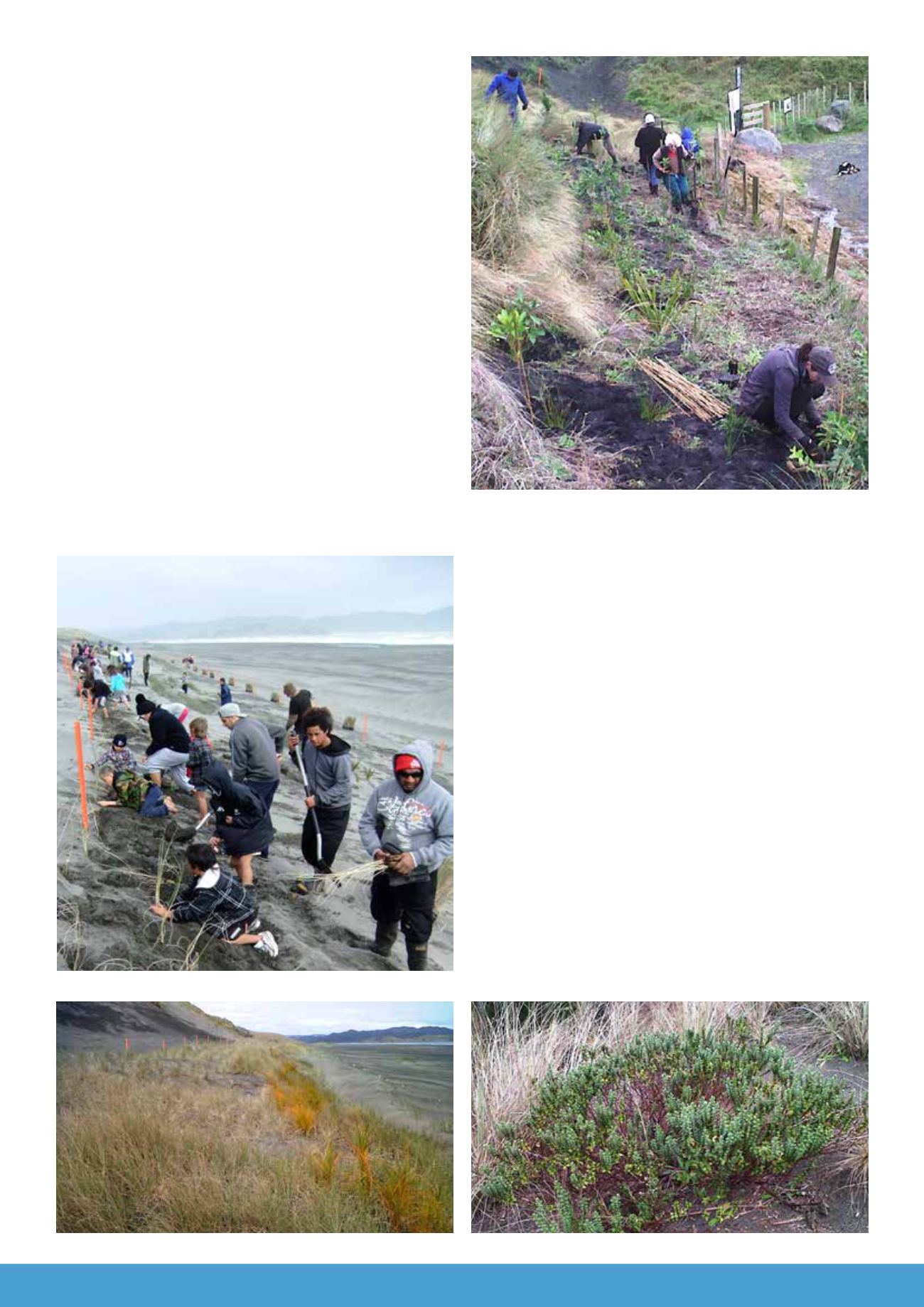
12
Ruapuke
After concentrating on the north end of the beach for the last five
years, Ruapuke Beachcare members shifted their focus to the south
end in 2012. There is a good dune sequence at this end of the beach
with a spinifex fore-dune grading into a wide back-dune zone made up
of pōhuehue, wīwī, toetoe and sand coprosma.
Behind the dune sequence is a wetland zone and the Ruapuke Stream
that flows from the base of Mount Karioi. These environments are a
feature of this area and provide important habitat for native wildlife.
The “mountain to sea” vegetation sequence is very rare on the Waikato
coastline and local Beachcare members are keen to protect and restore
this important ecological corridor.
Two working bees were held in 2012, with more than 1900 native
plants being planted in the corridor zone. The first working bee saw
more than 50 volunteers help to plant the north bank of the Rupauke
Stream using mānuka, cabbage trees and harakeke to restore the
riparian margin and provide shade. Pōhutukawa, karo and ngaio were
also planted in the neighbouring back-dune area.
In 2013, Beachcare volunteers added a range of coastal forest species
to the marram-dominated area that surrounds the car park, enhancing
the natural character of the area and restoring food sources for local
wildlife.
Ka- whia
Kāwhia Beachcare received a big helping hand in 2012 from the local
Kāwhia School. Seventy students, teachers and parents volunteered for
a dune planting working bee at the Te Puia springs section of Kāwhia’s
ocean beach. The group planted 2000 pīngao, spinifex and toetoe in
a 50 metre stretch of beach that was lacking native dune vegetation.
The group then planted a further 2500 dune plants to the same area,
extending the restored dune by a further 50 metres.
In addition to the fore-dune planting, Kāwhia Beachcare members
have been working on restoring the wide back-dune zone that
has become dominated by the invasive pampas grass. In this area,
Beachcare members are trialling planting native dune forest species
such as pōhutukawa, karo, akeake and karo amongst the pampas.
While pampas grass is a serious threat to the form and function
of dune-land areas, it has the potential to act as a nurse crop for
establishing patches of native trees, providing shelter from the strong
salt winds and preventing evaporation. In 2012, 200 native trees
were planted in this area using the same method as the trial plots
established on the harbour margin in 2011.
-
Ruapuke Beachcare working bee at the south end car park.
Kāwhia School working bee.
One year later.
-
A natural stand of the endangered sand daphne growing in the Kāwhia dunes.


